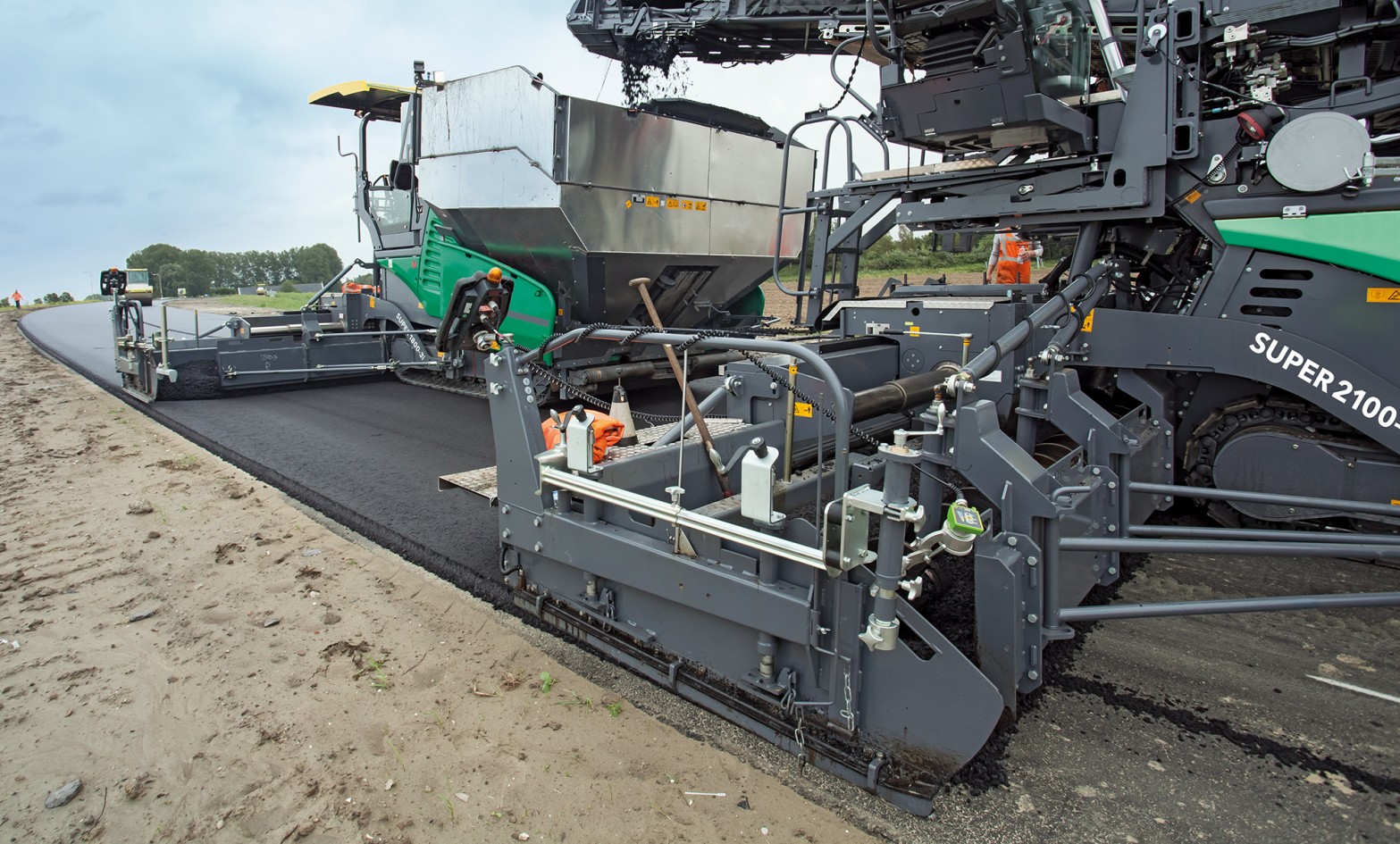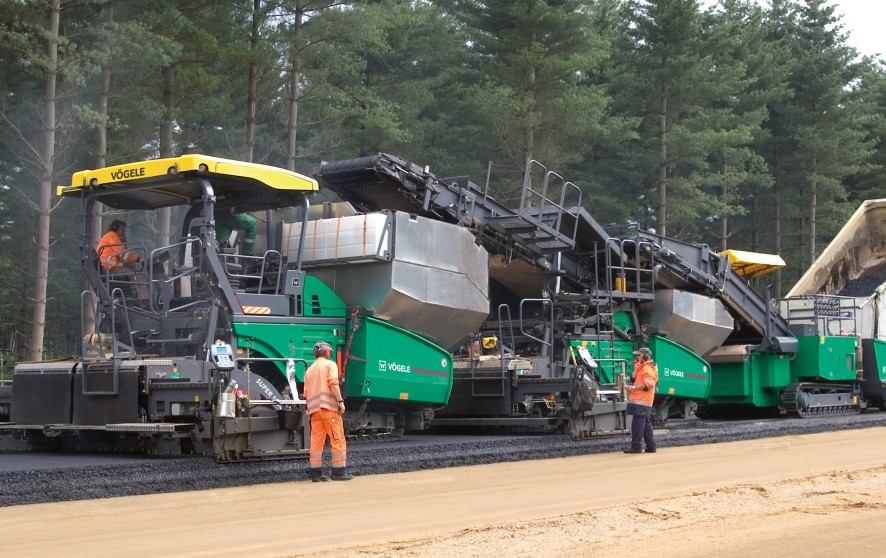

The “hot on hot“ paving method
In the majority of countries all over the world, roads are constructed in the conventional manner by building up asphalt pavements in layers. After the anti-freeze layer gravel and crushed-stone base courses are placed as well as an asphalt base, followed by asphalt binder and finally by surface courses. Today‘s massively growing traffic volume and above all the rise in heavy vehicle figures and axle loads lead to an increasingly higher stress on the roadway as a structure. In the wake, conventional road construction is facing new challenges.

The two-layer construction of asphalt pavements by “hot on hot“ paving is a particularly efficient method of building long-lasting roads. When using this method, binder and surface courses of hot rolled asphalt are laid “hot on hot“. This offers a number of advantages.


